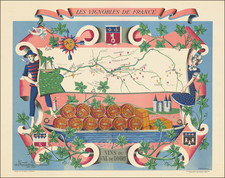Dieppe to Arques-la-Bataille -- The Battle of Arques
The Battle of Arques during the 8th French War of Religion.
The map shows the area between the important town and harbor of Dieppe at the mouth of the Arques River, inland to the town of Arques (now Arques-la-Bataille), depicting its Siege during the 8th War of Religion in 1589.
Dieppe was an important prize fought over during the Hundred Years' War. Dieppe housed the most advanced French school of cartography in the 16th century. Two of France's best navigators, Michel le Vasseur and his brother Thomas le Vasseur, lived in Dieppe when they were recruited to join the expedition of René Goulaine de Laudonnière which departed Le Havre for Florida on April 20, 1564. The expedition resulted in the construction of Fort Caroline, the first French colony in the New World. Another expedition two years before where Goulaine de Laudonnière was under command of Jean Ribault, a local Huguenot captain, had resulted in the foundation of Charlesfort, now in South Carolina.
Battle of the Arques
The Battle of Arques occurred on between September 15 and September 29, 1589 between the French royal forces of King Henry IV of France and troops of the Catholic League commanded by Charles of Lorraine, Duke of Mayenne during the eighth and final war (1585-1598) of the French Wars of Religion. The battle resulted in a victory for Henry IV.
When Henry III of France died, the Huguenot Henry of Navarre became by birthright the successor to the French throne (as Henry IV). Although he quickly declared his intention to "maintain and preserve the Catholic, apostolic and roman religion" of the country, the major French cities sided with the Catholic League and its leader, the Duke of Mayenne.
At that time, the royal army was in a shambles and Henry IV could only count on barely 20,000 men to conquer a rebellious country. In order to accomplish this task, he divided his troops into three commands: Henri I d'Orléans, Duke of Longueville (1568-1595) for Picardy, Jean VI d'Aumont for Champagne and Henry IV for Normandy (where he awaited reinforcements from Elizabeth I of England). On 6 August 1589, Henry set up camp with 8,000 men at the port of Dieppe.
The Duke of Mayenne sought to take back this key strategic port from Henry's forces and to drive him from Normandy. He drew together 35,000 troops, plus Cambrésis militias, Lorraine troops led by the Marquis de Pont-à-Mousson and a contingent of Spanish troops to attack the city.
Knowing that an attack against an army of this size would be pointless, and that staying in the city of Dieppe would be suicidal, Henry (after consulting with the Duke of Longueville and the Duke d'Aumont) decided to go to the city of Arques (today called "Arques-la-Bataille") and to construct important military defenses (raising of areas, rebuilding fortifications).
In September 1589, the troops of the Catholic League launched several attacks on Arques and the surrounding areas, but the Duke of Mayenne's forces were countered by royal artillery. Henry's rescue came from the sea on September 23: 4,000 English soldiers under Roger Williams sent by Queen Elizabeth had left England in several waves over three days. Seeing these reinforcements, the Duke of Mayenne decided to retreat, leaving Henry IV victorious.









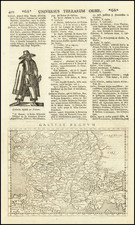
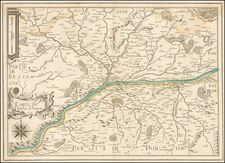
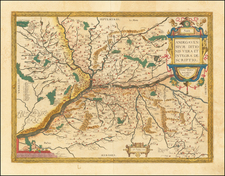
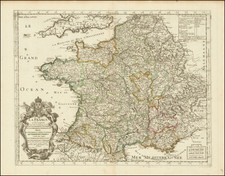
![[Portrait of Louis XV as a child] Ludovicus XV. Franciae et Navarrae Rex Natus 15 Febr. Anno 1710.](https://storage.googleapis.com/raremaps/img/small/95867.jpg)
